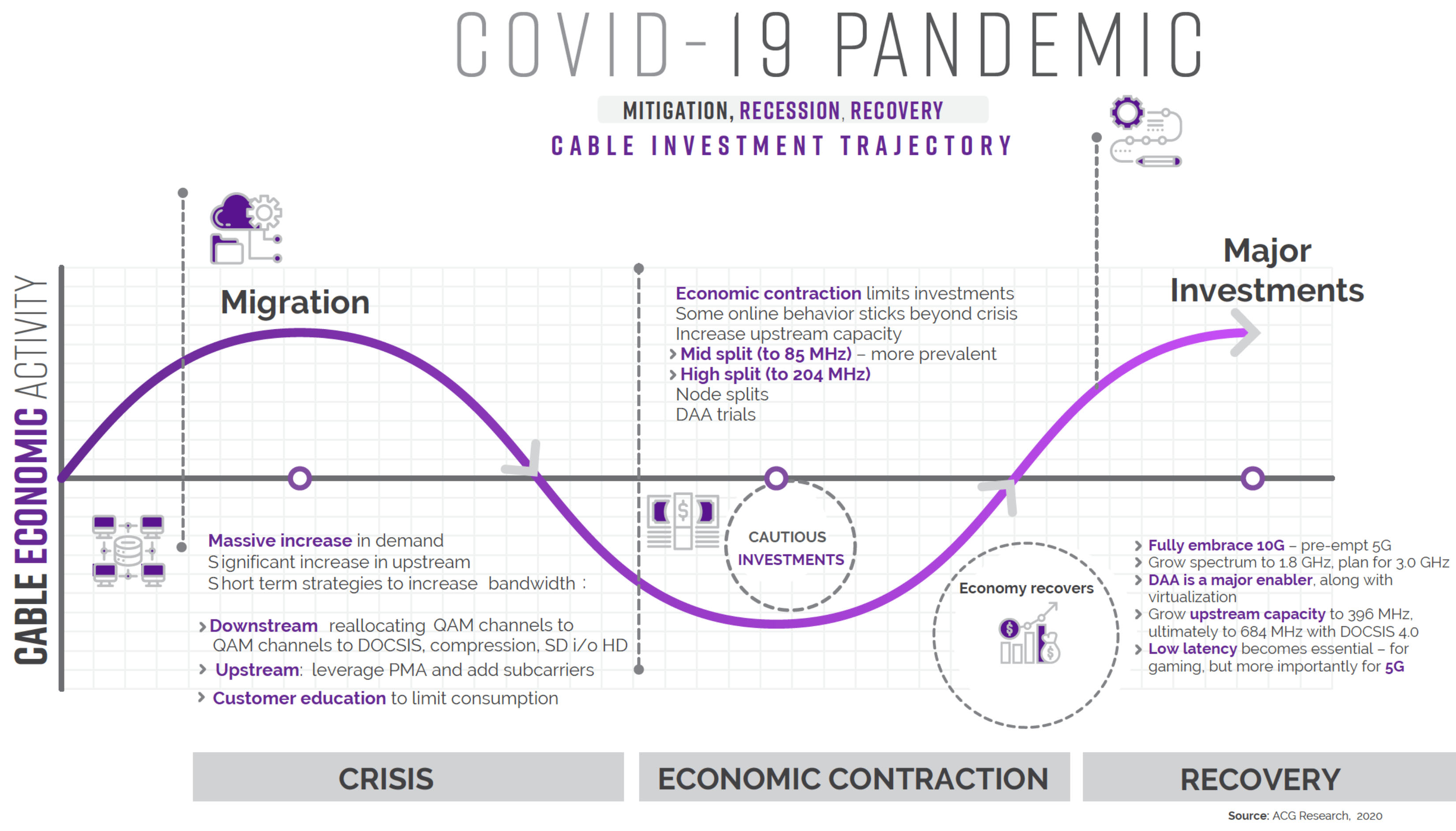The Impact of the Covid-19 Pandemic on Cable Infrastructure
The essential role of broadband networks in the current Covid-19 crisis is well established. A recent article in Multichannel Newsvery well described how cable operators are stepping up to meet demand despite enormous challenges. But what are the short-term and long-term implications of the pandemic on the evolution of the cable infrastructure? We see this play out in three phases on a broad level but with notable differences among operators and in different geographies:

Mitigation
In the near term, operators will resort to short-term measures to meet growing demand. They are freeing up capacity in the downstream spectrum by reallocating QAMs to DOCSIS, increasing compression, continuing node splits and other moves. In the upstream, operators who have deployed DOCSIS 3.1 can leverage the Profile Management Applications and add subcarriers. At the same time, content providers are playing a role by downgrading their content, for example, Netflix and YouTube, or staggering the release of their games, such as Sony and Microsoft.
Cautious investment
The health crisis will inevitably lead to some economic contraction despite the massive recent stimulus package. This crisis will impact small and medium businesses as well as consumers, the sweet market spot for cable operators. At the same time, the recent online spike will not completely go away once the crisis is over. Virtual engagement is here for the long term, and cable operators need to add capacity, particularly in the upstream, to meet new demand characteristics. At the same time, MSOs will not lose track of their 10G vision and will continue to plan for massive capacity expansion, including trialing DAA and virtualization.
Recovery
Over the longer term, this crisis has highlighted the importance of broadband networks, and the utilization patterns will even exceed current projections. Cable operators will need to update their playbooks to ramp up capacity expansion. Such scaling will need a new architecture, and the distributed access architecture and virtualization will be at the heart of these playbooks, along with emerging plans to deploy the recently ratified DOCSIS 4.0 specification for much expanded upstream capacity and low latency.
Multichannel Newsletter
The smarter way to stay on top of the multichannel video marketplace. Sign up below.
Guest blog author Liliane Offredo-Zreik is a principal analyst at ACG Research, where she is responsible for cable access infrastructure market research and consulting practice. Offredo-Zreik is also president and founder of boutique advisory firm The Sannine Group.

